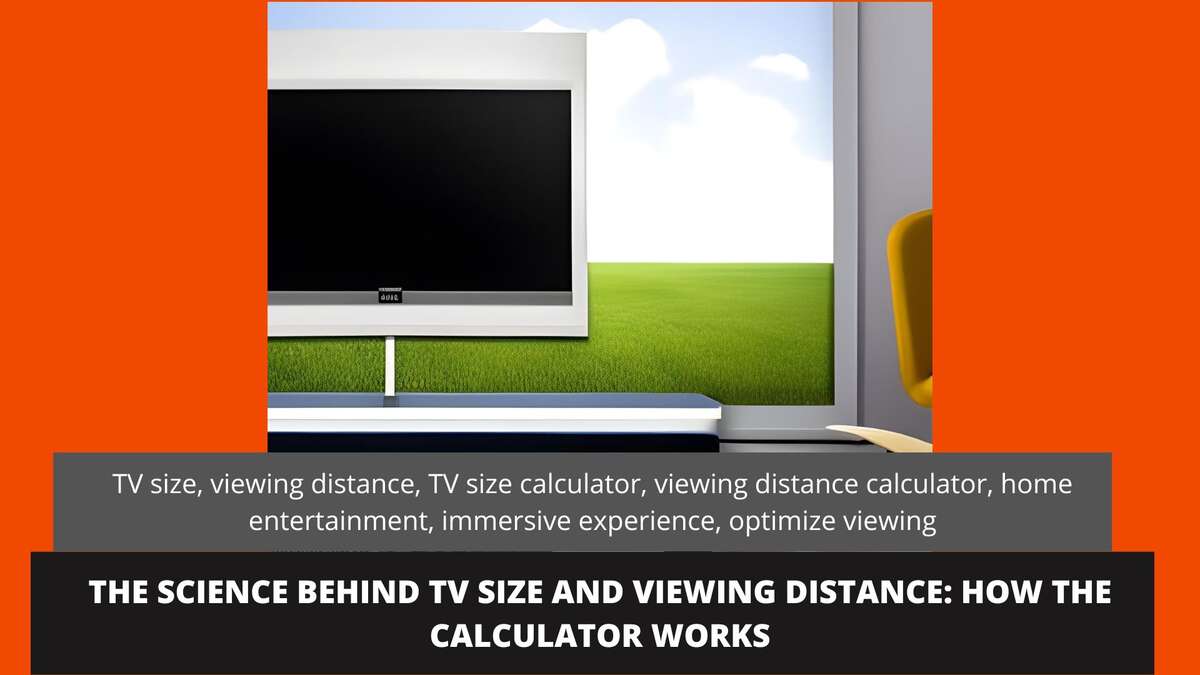When it comes to creating the ideal viewing experience, understanding the science behind TV size and viewing distance is essential. The TV Size and Viewing Distance Calculator takes into account various technical aspects to provide accurate recommendations for optimal visual comfort and image quality. In this article, we will dive into the mathematical formulas and scientific principles used by the calculator to ensure an immersive home entertainment experience.
The Relationship Between TV Size and Viewing Distance
The TV Size and Viewing Distance Calculator calculates the recommended TV size based on the viewing distance and other factors. To comprehend how the calculator works, let's explore the relationship between TV size and viewing distance:
Visual Angle: Visual angle refers to the angle at which the viewer perceives the display. It is determined by the size of the TV and the viewing distance. The TV Size and Viewing Distance Calculator considers the optimal visual angle for comfortable viewing.
Resolution and Pixel Density: The resolution of a TV, measured in pixels, affects the image clarity and detail. Higher resolutions, such as 4K or 8K, provide sharper visuals. The calculator takes the resolution into account when determining the appropriate TV size for a given viewing distance.
Field of View: The field of view represents the extent of the visible area when looking at the TV. It is influenced by both the TV size and viewing distance. The calculator calculates the optimal field of view based on recommended standards and industry research.
The TV Size and Viewing Distance Calculator Formulas
The TV Size and Viewing Distance Calculator uses mathematical formulas to estimate the ideal TV size based on the viewer's preferences and the available viewing distance. Here are some of the key formulas employed by the calculator:
Minimum Viewing Distance: The calculator determines the minimum recommended viewing distance by dividing the TV size (diagonal measurement) by a factor. This factor may vary depending on factors such as the TV's resolution and the viewer's visual acuity.
Maximum Viewing Distance: The maximum viewing distance is determined by multiplying the TV size by a factor. This factor considers the recommended visual angle and the viewer's visual acuity.
Optimal TV Size: By considering the minimum and maximum viewing distances, the calculator calculates the recommended TV size that provides an optimal viewing experience within the viewer's preferred range.
Ensuring Optimal Visual Comfort and Image Quality
The TV Size and Viewing Distance Calculator aims to ensure optimal visual comfort and image quality by adhering to recommended guidelines and industry standards. By providing accurate recommendations based on scientific principles, the calculator helps viewers avoid common issues such as eye strain, discomfort, and loss of image quality.
It is important to note that the calculator's recommendations serve as a starting point, and individual preferences may vary. Factors such as room lighting, screen technology, and personal visual acuity may also influence the viewer's experience. Therefore, it's beneficial to consider these additional factors and make adjustments accordingly.
For precise and personalized recommendations, I recommend using the TV Size and Viewing Distance Calculator by AskMyCalculator. Their calculator incorporates the latest scientific principles to ensure optimal visual comfort and image quality.
Conclusion
Understanding the science behind TV size and viewing distance calculations is key to creating an immersive and enjoyable home entertainment experience. By utilizing the TV Size and Viewing Distance Calculator, viewers can make informed decisions and ensure optimal visual comfort and image quality.
Note: The TV Size and Viewing Distance Calculator provides recommendations based on industry standards and scientific principles. However, personal preferences and specific viewing conditions may require individual adjustments.
Disclaimer: The information provided in this article is for informational purposes only. Always consider your personal preferences and consult with a professional before making any purchasing decisions.
